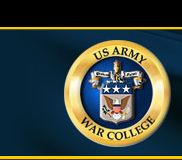Files
Description
The US military must create standing, numbered, and regionally aligned Joint warfighting headquarters— American Expeditionary Forces (AEFs)—around a command council and a staff organized into Joint centers and cells. Calls for standing Joint force headquarters are not new, but the demonstrated military effectiveness of the Joint Task Force (JTF) model coupled with increasing service-specific resource requirements and tightening fiscal constraints have resulted in little evolution in joint force headquarters construction since the end of World War II.
Analysis of the historical record has shown that joint warfighting is best conducted with a Joint warfighting command subordinate to the geographic combatant commands. However, the Joint Task Force model is problematic because the ad-hoc, post-crisis activation of JTFs, along with their antiquated command and control structure, inherently puts the United States at a strategic and operational disadvantage. In the future, the US military will primarily maintain its competitive advantage, especially in great-power competition, by being a superior and sustainable joint force sooner than its adversaries. The proposed AEFs draw on generations of hard-earned experience to maintain and grow American supremacy in Joint warfighting in an increasingly dangerous world.
ISBN
1-58487-841-X
Publication Date
8-17-2022
Publisher
USAWC Press
City
Carlisle, PA
Keywords
Joint warfighting, Joint Task Forces, American Expeditionary Forces, functional staffs, operations process, Command Councils, Joint warfighting concept, service warfighting concepts, multi-domain operations
Disciplines
Defense and Security Studies | Military and Veterans Studies | Military History
Recommended Citation
Eric Bissonette, Thomas Bruscino, Kelvin Mote, Matthew Powell, Marc Sanborn, James Watts, and Louis G. Yuengert,
The Future of the Joint Warfighting Headquarters: An Alternative Approach to the Joint Task Force (Carlisle, PA: US Army War College Press, 2022),
https://press.armywarcollege.edu/monographs/953

Included in
Defense and Security Studies Commons, Military and Veterans Studies Commons, Military History Commons

